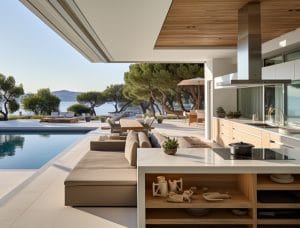As homeowners become increasingly focused on utility, sustainability, and return on investment, exterior upgrades are gaining traction—not only for curb appeal but for function. This comparative article evaluates three high-impact areas: building an ADU, selecting outdoor furniture, and upgrading to eco-friendly siding.
Let’s explore how each contributes to the overall value and versatility of a home.

Understanding ADUs: Flexibility That Pays Off
An ADU stands for Accessory Dwelling Unit—a secondary, self-contained residential structure on a single-family lot. It can be attached to the main home, converted from a garage or basement, or built as a detached unit.
Benefits of ADUs:
- Potential rental income
- Multigenerational housing
- Increased property value
- Adaptive use of land with minimal sprawl
Compared to outdoor furniture and siding, ADUs require the most initial investment but offer the highest potential ROI and space flexibility.
Outdoor Furniture: Enhancing Use and Style
Well-chosen outdoor furniture improves livability and visual appeal, particularly in homes with patios, decks, or ADUs. While it does not add square footage or structural value, it enhances perceived quality and comfort.
Key Factors:
- Choose materials like powder-coated aluminum, sustainably harvested teak, or recycled plastics
- Consider modular options that adapt to different uses
- Incorporate shade elements and cushions made with weather-resistant fabrics
In comparison to ADUs or siding, furniture is the most affordable and accessible upgrade, offering immediate lifestyle benefits with modest costs.

Eco-Friendly Siding: Sustainability Meets Protection
Eco-friendly siding offers both environmental and functional advantages:
- Improved insulation and energy efficiency
- Reduced maintenance over time
- Lower environmental impact during production and end-of-life
Materials to consider include fiber cement, engineered wood, recycled metal, and thermally modified wood. While it doesn’t provide living space like an ADU, it protects and enhances the entire home envelope.
Final Comparison
| Feature | ADU | Outdoor Furniture | Eco-Friendly Siding |
| Investment | High | Low–Moderate | Moderate–High |
| ROI | Long-term rental + value gain | Lifestyle only | Energy savings + resale appeal |
| Lifespan | 30+ years | 5–10 years | 20–50 years |
| Sustainability Impact | Variable | Depends on material | Strong, if sourced responsibly |
Conclusion
Each of these enhancements serves a different role. If ADU stands for Accessory Dwelling Unit, then it also stands for opportunity—whether that’s rental income, guest accommodations, or future flexibility. Meanwhile, outdoor furniture enhances the way you live in your outdoor space today, and eco-friendly siding safeguards your investment while aligning with sustainable practices.
When chosen wisely, these features not only transform your property—they future-proof it.

Comments are closed.